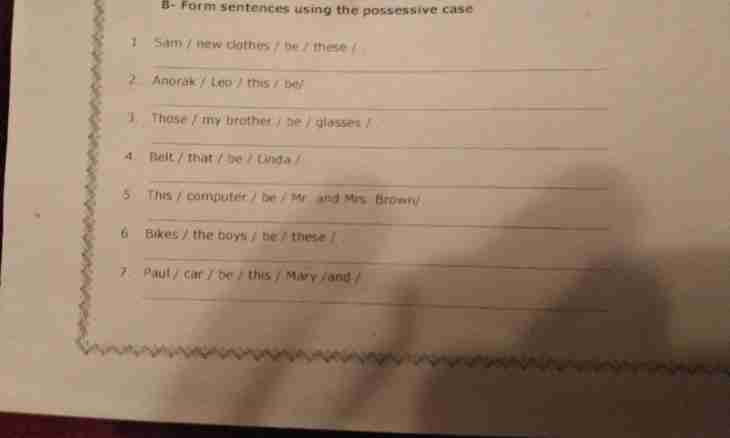The pronouns indicating sign of a subject or its accessory belong to type of possesive. Within this category two more groups – personal pronouns and one returnable are also divided (). The first is intended for the instruction on belonging to a certain person. For example, "your", "your", "our". And the second sends to one of three persons who act as the subject of the speech.
Instruction
1. Also the fact that only 1 and 2 persons possess special words for expression of accessory is remarkable, and the 3rd person for this purpose uses a form of a genitive case from initial "it", "it", "it" and "they" – "its", "its" and "their".
2. The possibility of change in three categories – sorts, a case and number belongs to morphological features of possessive pronouns. For example, following chains of changes: "wash", "mine", to "mine", "mine", "mine", "about mine" and "yours", "yours", to "yours", "yours", "yours", "about yours". The reflexive pronoun changes as follows: "", "", "to", "", "" and "about the".
3. It is also necessary to remember that possesive "our" and "your" in imenitelny and accusative cases form a similar short form and the zero termination. They incline as qualitative and relative types of adjectives. For example: "ours", "ours", to "ours", "ours", "ours", "about ours" and "yours", "yours", to "yours", "yours", "yours", "about yours".
4. Possessive pronouns also have syntactic features. Their communication with the defined noun is called coordination where possessive pronouns act as the coordinated definition. Example: "I see the boundless sea of love in your eyes", "Her face was filled with grief" and "Their child very well-mannered and are quiet".
5. But how to distinguish "its" possessive pronouns, "its" and "their" from the similar, but relating to type personal? In case of similar difficulty it is necessary to remember that the first type is characterized by three "moments": he answers the questions "whose?", "whose?", "whose?" and "whose?" (Example: "It was it (whose?) murderer"); the possessive pronoun always is uncoordinated definition in the offer; at addition of any pretext there is no "N" initial ("I asked his father" and "I asked his father").
6. The personal pronoun is also characterized by three aspects: this type of words answers questions of oblique cases ("She listened to it (whom?) with ill-concealed contempt was also silent"); pronouns perform addition function in the offer; if to add a pretext to personal type, it always has initial "N" ("I asked it" and "I asked it").
7. Remembering these rules, it is possible to understand many problematic issues arising in case of definition of type to which the pronoun belongs. Also quite frequent difficulty is that additional "N".

